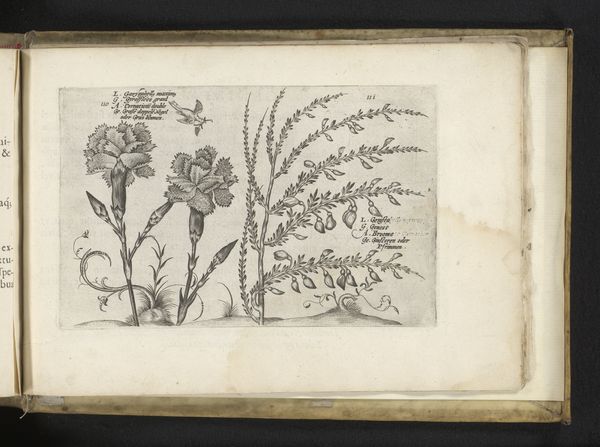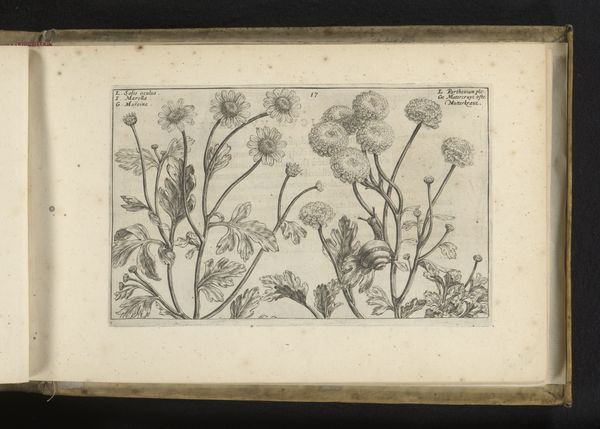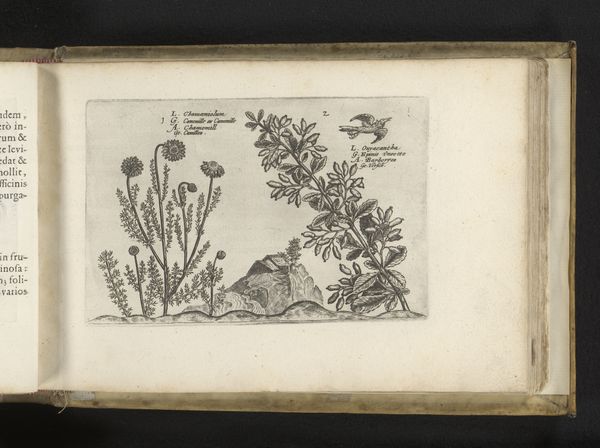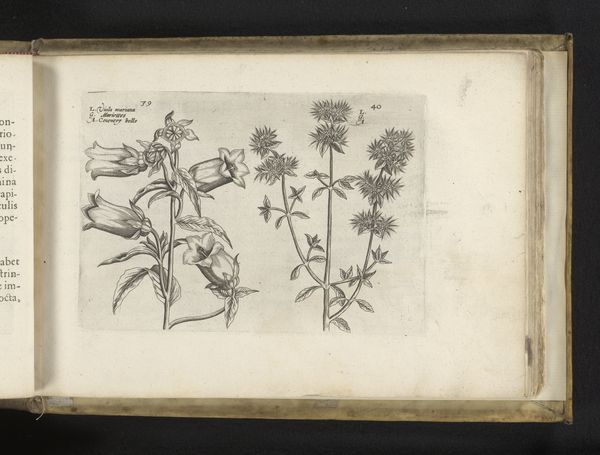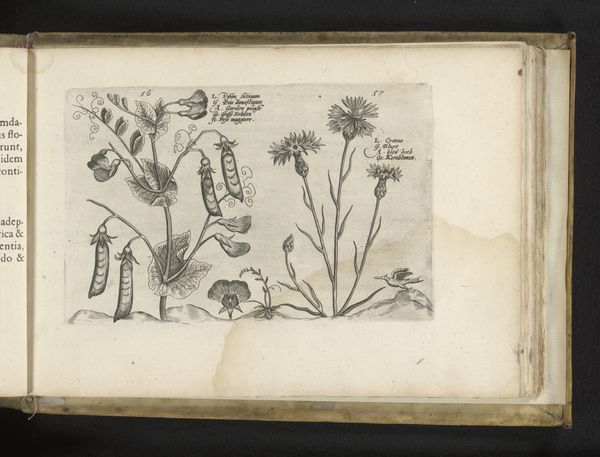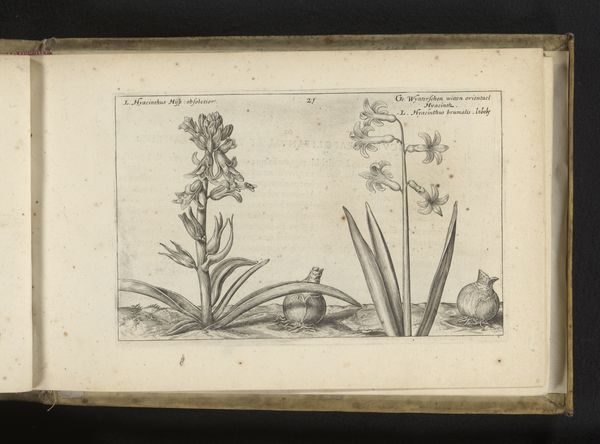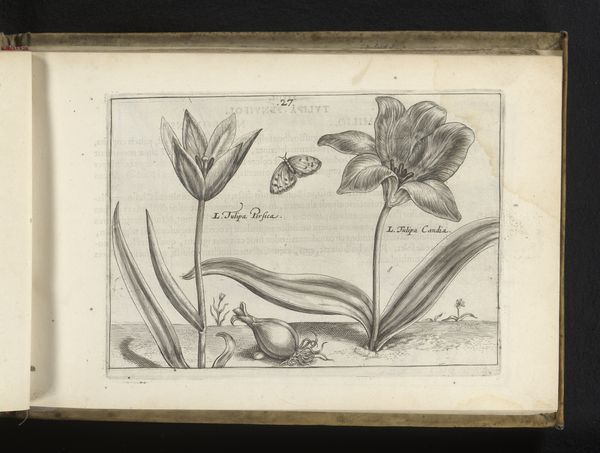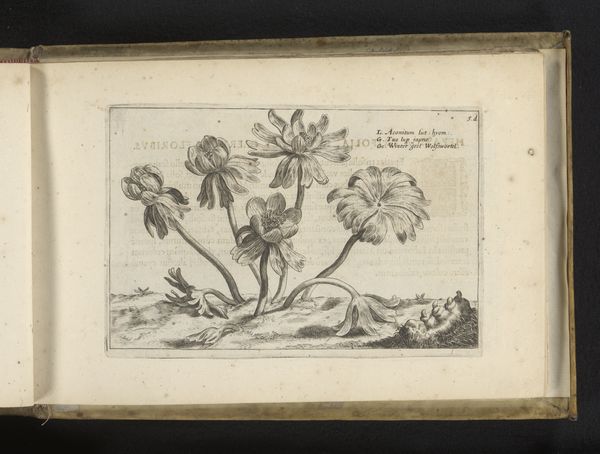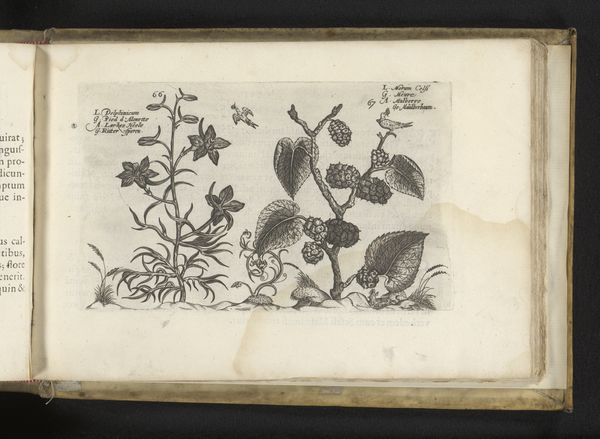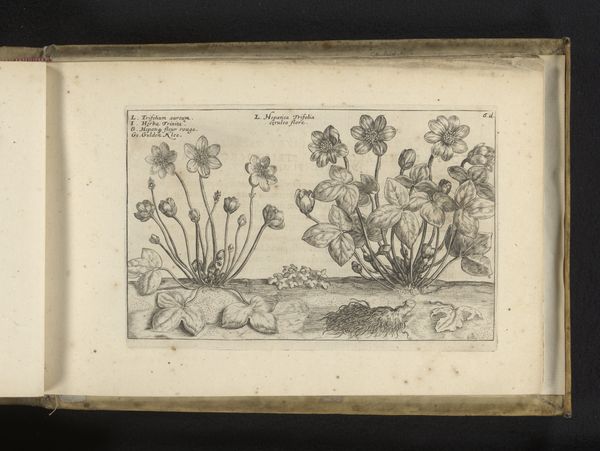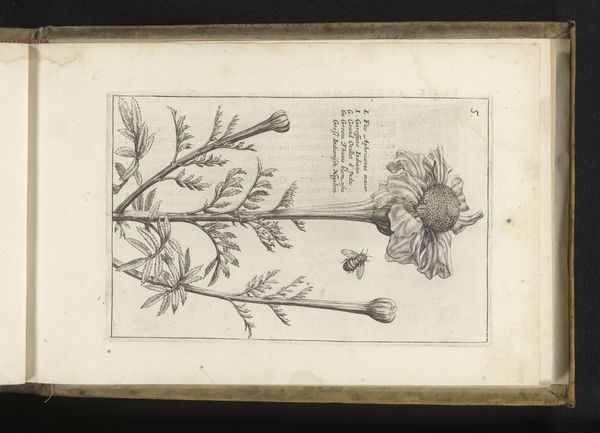
print, engraving
#
dutch-golden-age
# print
#
line
#
engraving
Dimensions: height 127 mm, width 201 mm
Copyright: Rijks Museum: Open Domain
Curator: This print, "Moerasvergeet-mij-nietje en gerst" from 1617 by Crispijn van de Passe the Younger, features delicate engravings of a forget-me-not and barley. It has an almost scientific illustration vibe. What do you make of it? Editor: The detail is certainly striking. What interests me most is thinking about the role of these materials. How does understanding the copperplate engraving process impact our reading of this imagery, which, while presented as 'art', also has demonstrable utilitarian purposes? Curator: Exactly! Consider the social context of the Dutch Golden Age: a burgeoning mercantile society where detailed botanical illustration wasn't just aesthetic. These images served a practical purpose. Prints like these facilitated the transfer of agricultural and botanical knowledge – vital information impacting trade, land use, and ultimately, wealth creation. What is the labor involved in creating the copperplate, and the consumption of that product in relation to class or commerce? Editor: So, beyond appreciating its beauty, we're seeing this as a record of early material science—a form of accessible information to influence commerce? The use of engravings to document this plant's 'use value', you could say... How would you describe this value exactly? Curator: We can explore its utility through the engraving technique, noting how it democratizes knowledge of commodities in 17th century Europe. Each line meticulously etched into the plate allows for reproduction and distribution, marking this artwork a medium to mass produce capital! What does the repeatable act mean to the 'prestige' of the object? Editor: It definitely shifts my perception. Seeing it as a precursor to informational graphics changes my appreciation for it. I had initially thought that prints were a luxury art form, not functional tools... Curator: And there we can examine the line between art and design -- where does the craft fall? And how can art be truly evaluated when materials can also produce commodities? It's these explorations that push us to rethink the relationship between artistry, utility and socioeconomic structures.
Comments
No comments
Be the first to comment and join the conversation on the ultimate creative platform.
